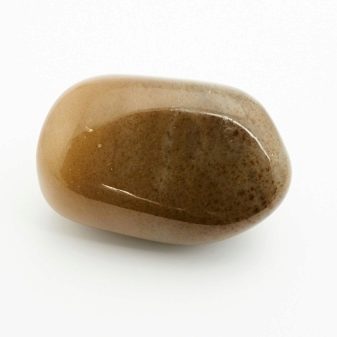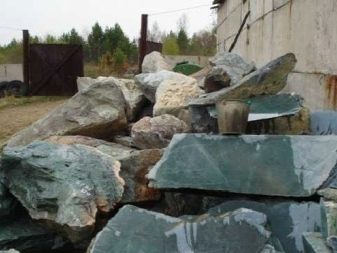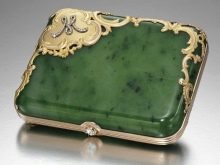Jade is a stone very famous in the masses. Most people associate it with jewelry. But also various crafts and even luxury goods are made from it. And about its healing properties, in general, legends make up. But more on that later, but for now we’ll look into its nature of origin and some features.


How is a stone formed?
Jade is a natural mineral formed by solidification of magma inside serpentine rocks. If you look at the jade from the inside, you can see that it is a kind of lattice of crystalline fibers. This structure gives the stone a special strength, which can be compared with the strength of steel, for which it is appreciated throughout the world. This mineral does not react to acids, practically does not melt at high temperatures, does not scratch, but lends itself well to processing and polishing.
In nature, this mineral is usually found in the form of huge boulders. Natural raw jade is most often an opaque mass with an implicit sheen.
Depending on the location and composition, jade is usually divided into several types.


Uniformly colored stones
Stones with uniform colors and a high degree of translucency. To this group it is customary to attribute minerals of several colors.
- Whites - against a boiling-snowy background, implicit bluish-yellow or green stains are observed with a smooth flowing of one shade into another.
- Solid green - jewelers value them the most and most often use them in jewelry.
- Solid gray Jade combines several shades of gray from light to dark tones. Such samples are a rather rare occurrence.
- Gray green stones as if covered in mud. With dominant gray, there are small hints of green.


Spotted Minerals
They are obtained due to the uneven distribution of impurities that make up their composition. This group is usually divided into the following subgroups:
- tobacco - a mixture of gray with brown and green;
- blue gray;
- dark green;
- bluish green;
- finely spotted - has spots of implicit color with an abundance of white, gray and green spots of different intensities of color.


Interspersed jade
These are stones in the texture of which there are impurities of chlorite and minerals from the ore group.

Deposits in the world
Since the nugget is of volcanic origin, its deposits are possible in those places where volcanic magma has frozen. Jade particles can be found in various rocks - for example, in marble or slate. It is mined in stone quarries, as well as in the mouths of large rivers and small streams. At the same time, “aquatic” minerals are considered more durable, therefore they are valued higher. In nature, jade deposits are found on every continent of the Earth.
It is generally accepted that first started jade mining in China. However, at the end of the 18th century, large deposits of stone were discovered in Myanmar (Burma). A little later, it began to be mined in the United States. Even later, natural reserves of jade began to be found in other countries around the world. This increased competition among manufacturers.
By the end of the 20th century, stone reserves in China began to deplete. And since jade is considered a national symbol in this country, today the country is a major exporter of this mineral from other countries, such as Australia, Canada, USA, Kazakhstan and, of course, Russia. In addition, jade is exported from some Asian countries, such as Taiwan, and European countries - Italy, Germany, Sweden. Jade deposits are also known in British Columbia, Polynesia and the Pamirs.


Where are they located in Russia?
In Russia, there are 16 districts with large deposits of jade. But most often, when mentioning this rock, people remember the deposits located in Buryatia. It is deservedly called the storehouse of gems: out of the total number of mining sites, 13 deposits are It is in Buryatia. The main deposits of the nugget are located in several places of the republic: these are Bauntovsky, Bratsky, Zakamensky, Muysky, Okinsky and Tunkinsky districts. On the border of the republic with Transbaikalia, reserves of jade of rare colors, such as white, blue and red, have been explored. In Russia, this is the only place where minerals of a similar color are found.
One of the most famous industrial areas of Buryatia is the Ospinsky field. It is located in South Siberia, more precisely, in the system of the East Sayan mountain complex. Jade deposits were found here at the mouth of the Ilchir River, a tributary of the larger Onot River. The production is located near the village of Kyren, Irkutsk region. It has explored 17 green jade veins of various colors, of which 7 are currently working. Here, a rare-looking stone with a cat-eye pattern is mined. Such stones are rare and are in high demand in Europe and around the world. It is known that at present the Ospinsky deposit is on the verge of depletion.


Another well-known jade deposit is Ulan-Khodinskoye. It is located on the ridge of Ulan-Khoda and at the mouth of the Khara-Zhalga River. 21 jade veins have been explored here. The local mineral has juicy bright green shades, it is slightly translucent in thin chips. The stones from this area do not contain foreign inclusions, with the exception of individual particles of the spinel mineral group.
The Kovykta deposit is located in the Trans-Baikal Territory in the Bauntovsky District. It was opened in 1984. At present, two explored sites are known: it is Transparent and Bearish.
The area of each of them is about 1 square. km There are 21 veins of green jade.


On the territory of the Republic of Buryatia there are deposits that are not sufficiently explored due to the fact that there is no normal road there. Some remote corners can only be reached by helicopter, and transporting them to the "Big Earth", as the mainland is called here, can only be done in winter, when the rivers are covered with a thick layer of ice.
Adverse climatic conditions also create certain difficulties in the extraction of minerals. Therefore, at the level of the government, a decision was made on the construction of a jade processing center in Ulan-Ude. The plant is engaged in sorting and processing of raw materials before subsequent sale. Of the low-grade minerals that used to go to waste, various crafts and household items are made here.
The production is equipped with the most modern equipment, and the best Chinese craftsmen train employees. A jade museum is opened on the territory of the enterprise, and tourist excursions are led to the factory itself for everyone to find out how they work with this amazing stone.


Separate manifestations of the mineral are noted in the Urals. In particular, in the Chelyabinsk region there are reserves of jade colored with another mineral - chromogrossular or green pomegranate (uvarovit). From a scientific point of view, such stones are of great interest, but the mass production of jade in this area has not yet been established. There are several reasons for this.
- In nature, there are stones weighing several tons, and jade itself has a high viscosity, so it is difficult to process them.
- Almost all gem deposits are in remote places. It is difficult to get close to them, and it is difficult to deliver special equipment for processing jade there.
However, despite all the difficulties, exploration of new deposits of nugget is ongoing. So, already in the XXI century, the Khodynskoye jade deposit located on the Tsipa River was discovered, as well as the Udokanskoye deposit at the mouth of the Kalar River.


What is jade for?
The scope of this nugget is very diverse. In the distant past, people valued a mineral for its special strength and made weapons out of it - spears, arrowheads, and other military attributes. In the modern world, jade is most often used as inserts in jewelry. Rings, bracelets and jewelry are made from whole pieces of high-grade stone, which can be either carved cut or carefully polished. It is customary to give such jewelry as a talisman - it is believed that this breed has magical power and brings good luck.
The healing properties of jade are scientifically proven. Even in ancient times, various powders and ointments were made from it. Modern scientists note the healing effect of the mineral on the genitourinary system. When constantly wearing a product with a jade insert on the body a person's blood pressure normalizes, the work of the cardiovascular and respiratory systems improves.
The stone is able to relieve headache symptoms, reduce the risk of stroke and some eye diseases.


Doctors recommend regularly visiting saunas where jade heaters are installed. Such steam has a therapeutic effect on the human body. It positively affects the condition of the skin, keeping it in good shape for a long time, improves metabolism, helping to lose a few extra pounds. A visit to such a steam room is recommended to relieve chronic fatigue and stress, as well as for problems with the kidneys. In addition, the constant proximity of the gem to wood also favorably affects its shelf life. The stone is not afraid of high temperatures, insensitive to sharp changes, keeps warm for a long time when heated, saving on fuel for stoves and fireplaces.
In China, this mineral enjoys special honor and respect - there it is valued on a par with gold, and sometimes above it. During the wedding ceremony, the newlyweds decided to give jade objects: pens, perfume bottles, writing instruments, musical instruments, caskets, powder boxes, snuff boxes, cups, glasses and other souvenirs - this is the best way to express your wishes for prosperity and prosperity.



Jade possesses antiseptic propertiesTherefore, in China, until the invention of porcelain, all dishes were made from it. The pool, the walls of which are decorated with this stone, less often needs cleaning and changing the water - it stays clean longer.
Jade is an excellent building and finishing material. Due to the variety of colors and the uniqueness of the internal pattern, it is often used in the external and internal decoration of concert halls, art palaces, fountains and private residences.
In royal and royal palaces, jade elements are often found. Fireplaces are made from it, they are encrusted with furniture, and they are used to decorate floors and walls.


To learn how to distinguish real jade from a fake, see the next video.










